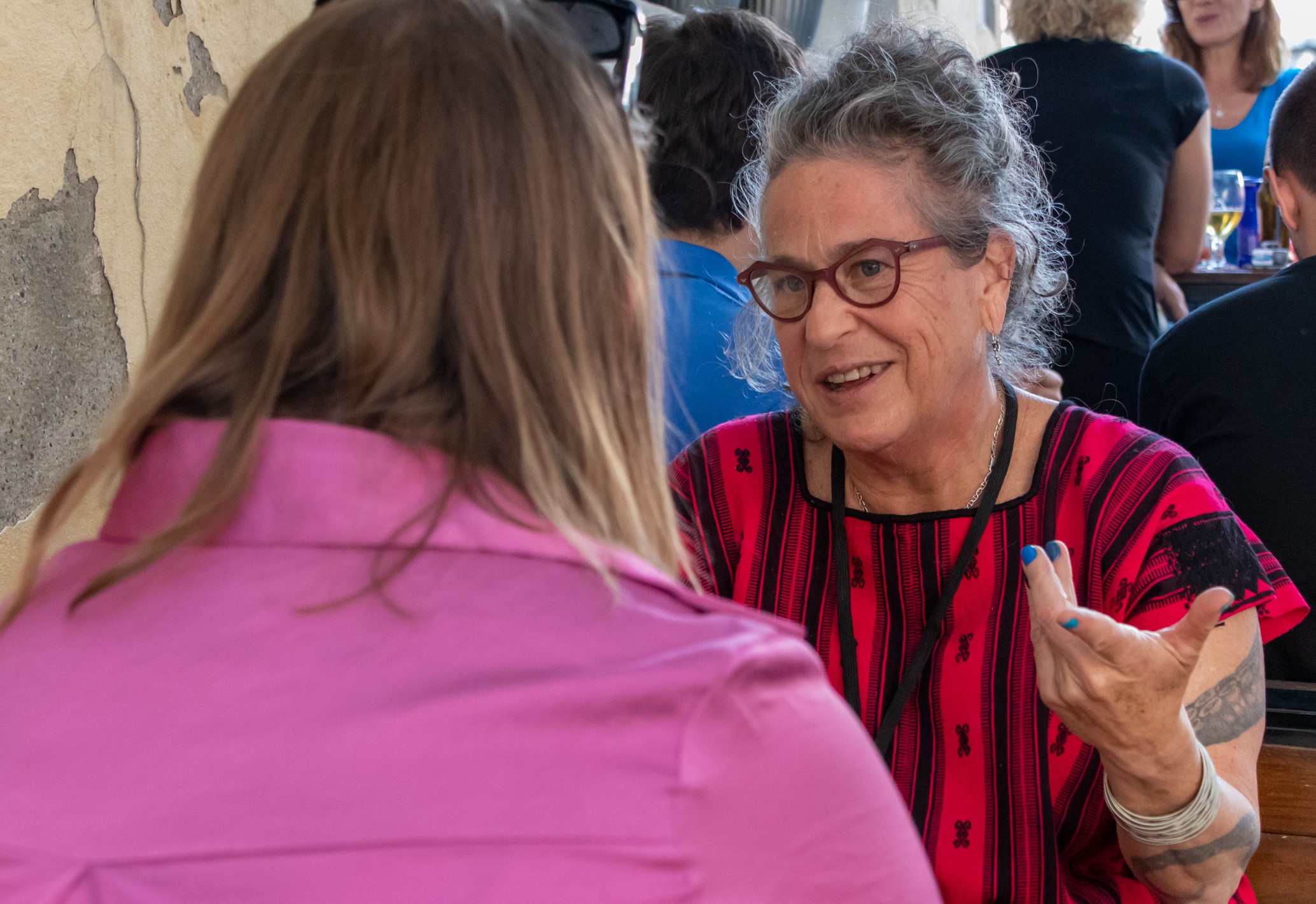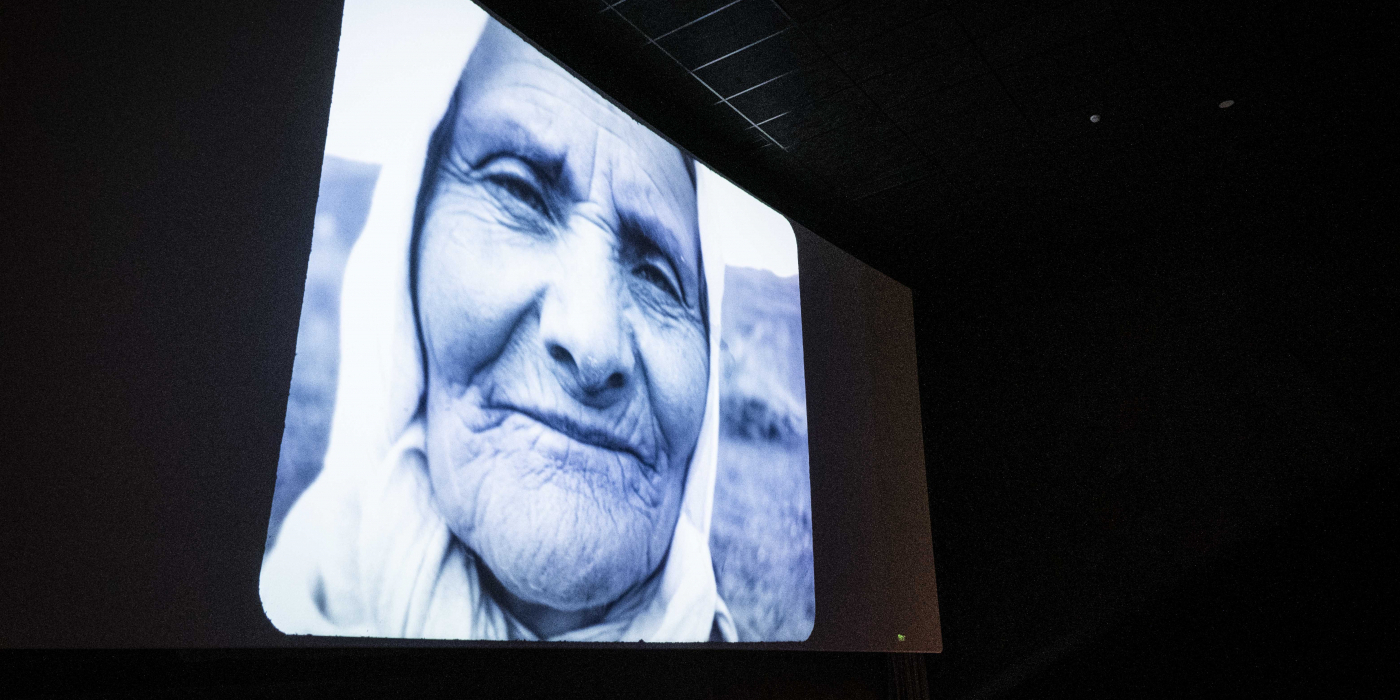11/08/2023
Naomi's Prizren day has been packed with films. She wanted to go to as many cinemas as she could and you can see all the films she has highlighted in her program. The film “Three Sparks” is in the Balkan Dox category. Director Naomi Uman connects a personal story to an old legend with the role of women in society in rural Albania.
Anyone who joined the screening of “Three Sparks” by Naomi Uman knows that is here for a treat. To the ones that did not get the chance to see this film, I can only say it is as Albanian as it can get.
On a journey from rural Albania and straight to Prizren’s cinema, we follow the stories of women in Albania’s villages, and whether it is Rabdishtë or Vermosh: the costumes are still deeply rooted in the old tradition. But we get to see a depiction of still-like images in black and white that lead up to the daily routines and livelihood.
Naomi tells me her first contact with Albania was thanks to an invitation by Thomas Logoreci, who invited the director to find a way to visually narrate the villages of Albania. After a series of events, Naomi found herself taking these stories close to her heart and together with a heavy camera travels throughout Albania. Her approach could have been different if only it did not intertwine with the sad event of her dog dying in front of her and her first contact with the legend of Rozafa. It does not feel like a coincidence. During her trips to Albania while shooting for the film Naomi stopped in Shkodër at “Mi casa es su casa” and from events happening there she found her connection to Albania, through personal experience. The collision between her language, Albanian traditions, and personal experience finds a solidified structure to flow with the Albanian culture seamlessly. She says: “Everything I know about Albania, I know through books”. Reading the Kanun and Edit Durham’s books reveals the tone and influence in finding a way to navigate the stories she heard, the costumes she got to know about and everything in between.
The journey we see throughout the first part of the film, for all those who were attentive, we follow up her story sung by a Mexican artist and played by Mexican instruments. Since Naomi started to learn Albanian she kept the lyrics in Albanian. This choice gives a fresh perspective while including core Albanian singing tradition with a touch of interculturality.
While explaining how striking and haunting the images seemed to me as a native Albanian I went on to ask the director about a certain poetic element these images have. All those who have read the poems of Martin Camaj, a modern Albanian author, can easily connect the sense of tradition combed through elements of mysticism, lyricism, and other-worldliness.
“So the first part is my story. I found a parallel with the legend of Rozafa, while I know it was handed down as a song, I wanted to tell my story through a song.” - while we could see her journey on camera, meddling with traditions, costumes, and a crash course in the Albanian language, we could grasp the juxtaposition of her practice as a filmmaker and her editorial process in meddling the already lived experience and the aftermath of a reflective process.
Her experience, as she says, reflects the work of an experimental filmmaker. The story tells itself and one has to be patient to find Arianna’s thread out of this tunnel of traditions.
“When I was in the village, it sort of waited to take the insert and my camera is very heavy and difficult to transport and I was using sound film. That’s why it has that weird overexposed look.”

A turn of events and a revelation made the director change the course of the film, hence including images and stories of women who spend their days working, plowing, and taking care that every day feels so the same. Technicalities come in between and affect the way of shooting. As the director said herself:
“When I had my camera with me and then I was editing, I realized that I was missing the voice of the villagers. I had this romanticized view of the village which I found to be beautiful but also difficult and poor.”
She wanted to include their voice while keeping a heterogeneous distance from her subjects. She was able to put to use the voiceovers of the conversations and considered them a byproduct of the time she spent there. The thin line between the personal and impersonal is safely secured while she lets them construct the structure of the film, to let then lead her, and to shoot or place the camera. It is a hopscotch of sorts.
She speaks about the surprise she found during her time in Albania and the concept of burnish was very new to her and reading the Kanun, brought a new perception and understanding of the role of women in these remote places in Albania. The copy of Kanun she holds brought the inspiration in the film, to stylize the texts second to the typography used in the classic Kanun. So the film itself seems like a sort of step-by-step regulatory system of how to know Albania through stories.
Through poetic images and concealing powerful imagery, we see a cinematic dream as a stratum to ground the story. Ruminating over a legend, the study of Kanun the film welcomes us into a story that invites us to read into Albanian culture just like in “Broken April” by Ismail Kadare, or Trebeshina’s “The Village over seven hills”. "Three Sparks" offers a haunting, magical, relying upon mystery and yet complete sincerity stories we all want to tell.
By: Blerina Kanxha
Photo 1: Agon Dana
Photo 2: Malda Lika



